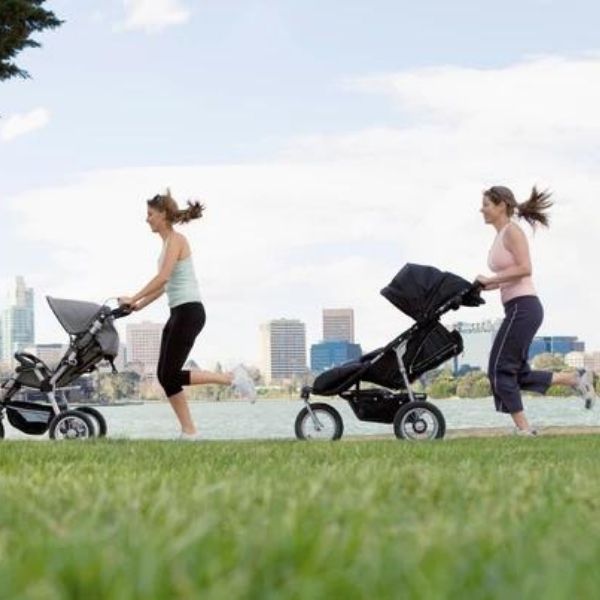Approximately 25% of women do not participate in physical activity for a variety of reasons. This number increases during the postpartum period due to physical, personal, psychological and physiological factors. Many women are also very unsure of how to get back into exercise postpartum.
Many women find peace while running, whether that be prior to pregnancy or during pregnancy. However, it is common for women to experience stress incontinence, pelvic pressure and even pain while running as they move into their third trimester. Unfortunately these symptoms can persist postpartum, and even worsen, if we do not appropriately educate women on how to safely return to endurance exercise following birth.
We know that there is an increased feeling of well being with aerobic exercise that can be extremely beneficial for new moms. Becoming a new mother can be stressful and running may give women a sense of their “old self”. However, it is essential to ensure that running too early postpartum is not compulsive and that they are continuing to hydrate and eat a sufficient amount of calories.
While running at a moderate pace, ground reaction forces are 1.6-2.5 times your bodyweight. Running, as a high impact sport, has a higher prevalence (58%) of urinary incontinence than lower impact sports (12%). High impact activities, such as running, box jumps, double unders and sprinting, make women 4.5 times more likely to develop urinary incontinence when compared with low impact activities. Although this is the case, a functionally braced pelvic floor during high impact activities may protect women against urinary incontinence and pelvic organ prolapse.
The biggest thing I see with postpartum women, is doing too much too soon. By educating women on how to gradually increase their activity, we will be able to further support them through this new phase of their lives.
Training Load: the physical work you do to prepare for your event (the distance you run)
Load Capacity: your ability to handle the training load
In order to improve our load capacity, we must GRADUALLY increase our training load. In postpartum runners, we tend to see that the training load quickly outweighs their load capacity. They increase their distance/pace too fast and exceed what their body is able to cope with. This will lead to dysfunction, such as pain, urinary incontinence and symptoms related to pelvic organ prolapse.
Readiness to return to aerobic exercise postpartum takes much more than being cleared for exercise by your OB or midwife at 6 weeks postpartum. Running requires a strong pelvic floor, but also a core canister that is working appropriately. Meaning that you should be able to demonstrate good breathing patterns and the ability to stabilize your core and pelvis appropriately.
Dr. Sarah specializes in postpartum care and will be able to help you return to exercise, whether that be running, weightlifting or zumba. Her unique approach to postpartum care will include the appropriate examinations, assessments, rehabilitation and education to get you back doing what you love safely!





